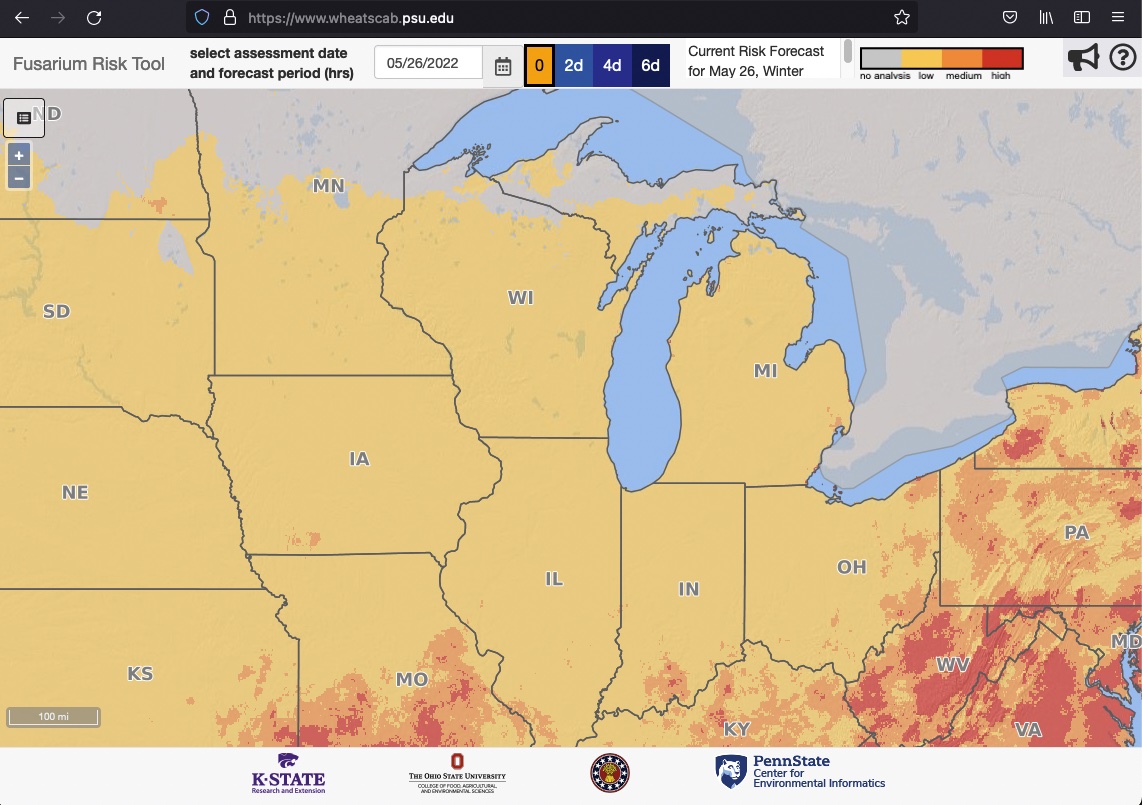Damon L. Smith, Extension Field Crops Pathologist, Department of Plant Pathology, University of Wisconsin-Madison

Figure 1. Fusarium Head Blight Risk Map
Winter Wheat is Wisconsin is in the “boot “or heading in the southern part of the state. Currently the Fusarium Risk Assessment Map is showing low risk for Fusarium head blight development (Fig 1). Rain is forecast for the next several days, thus, the risk is likely to climb as we approach wheat heading and flowering. Wheat farmers and consultants should pay attention to weather closely over the next several weeks as the decision to apply fungicide will need to be made during this time.
In winter wheat in Wisconsin, research has demonstrated that the best time to apply fungicides is between the start of anthesis (first anthers out) to 7 days after the start of anthesis. This same research has demonstrated that waiting to apply fungicides 5 days after the start of anthesis, optimizes deoxynivalenol (DON or vomitoxin) reductions in finished wheat. This is likely since head emergence in Wisconsin can be very uneven. Waiting 5 days after the start of anthesis may help with optimizing application timing to maximize heads flowering and receiving fungicide protection. Fungicide choice is also critical, with Prosaro, Caramba, and Miravis Ace providing the most consistent control of Fusarium head blight and reduction of DON in trials in Wisconsin. Fungicides containing strobilurin fungicides should be avoided after the boot stage of wheat as these products can increase DON levels in finished grain. Fungicide efficacy information from Wisconsin can be found at https://badgercropdoc.com/research-summaries/. National ratings for fungicide efficacy of small grains can be found HERE.
Additional thoughts on using fungicide on wheat can be found in this Bumper Crops Video.